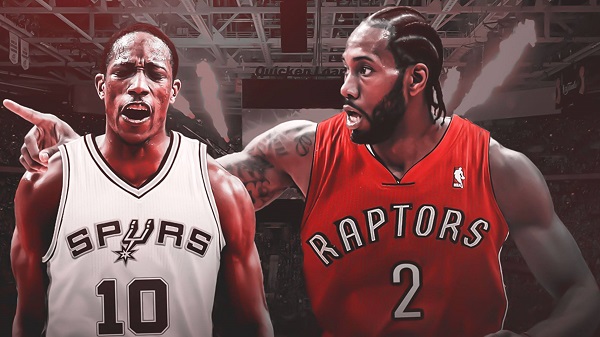
Professional sports is a mercenary sport as players are more loyal to their brand than their teams and organizations view players more as assets than valued employees like in most industries.
This has become especially true in the NBA as a handful of stars seem to change teams every off-season these days as teams try to build the next super team.
You want to know just how often stars change zip codes? Look no further than this stat…
From Marc Stein via Tom Haberstroh:
In the 18 months since the 2017 All-Star Game in New Orleans, 12 of the 24 players who participated in that game have switched teams.
• DeMarcus Cousins. He was traded pretty much during that 2017 All-Star game from Sacramento to New Orleans. He signed this summer with Golden State.
• LeBron James. He left Cleveland this summer as a free agent to join the Los Angeles Lakers.
• Paul George. Traded from Indiana to Oklahoma City, where this summer he re-signed.
• Kawhi Leonard. He forced a trade from San Antonio and ended up in Toronto.
• DeMar DeRozan. Traded from Toronto to San Antonio as part of the Leonard deal.
• Carmelo Anthony. He was a Knick at the 2017 All-Star Game, was traded to Oklahoma City before last season. This season he was traded to Atlanta, which bought him out, and within hours of this story going up he will sign with the Houston Rockets.
• Jimmy Butler. Traded from Chicago to Minnesota (and former coach Tom Thibodeau).
• Gordon Hayward. Left Utah as a free agent and signed with Boston (and his college coach Brad Stevens).
• Kyrie Irving. Forced a trade out of Cleveland, was sent to the Boston Celtics.
• Isaiah Thomas. Traded from Boston to Cleveland in the Irving deal, then traded again at the deadline from Cleveland to the Los Angeles Lakers. This summer he signed with Denver as a free agent.
• DeAndre Jordan. Left the Los Angeles Clippers as a free agent, signing with Dallas.
• Paul Millsap. Left Atlanta as a free agent, signed with Denver.
That is pretty mind-blowing when you think about it. It is indicative of how much bargaining power players have with player opt outs offered in virtually every contract for a top-tier player and deals getting shorter in length by the year it seems as teams try to have as much cap flexibility as possible to attract more stars and players trying to maximize their opportunities to cash in on large contracts as the cap continues to rise and their max contract levels increase with more accomplishments and years in the league.
2010 really feels like when this era started and 2019 projects to be as crazy as any other year and something like two-thirds of the league could enter next off-season with $20 or more in cap space.
The NBA has become a 24/7, 365 day news cycle and teams are always preparing for the next off-season.















